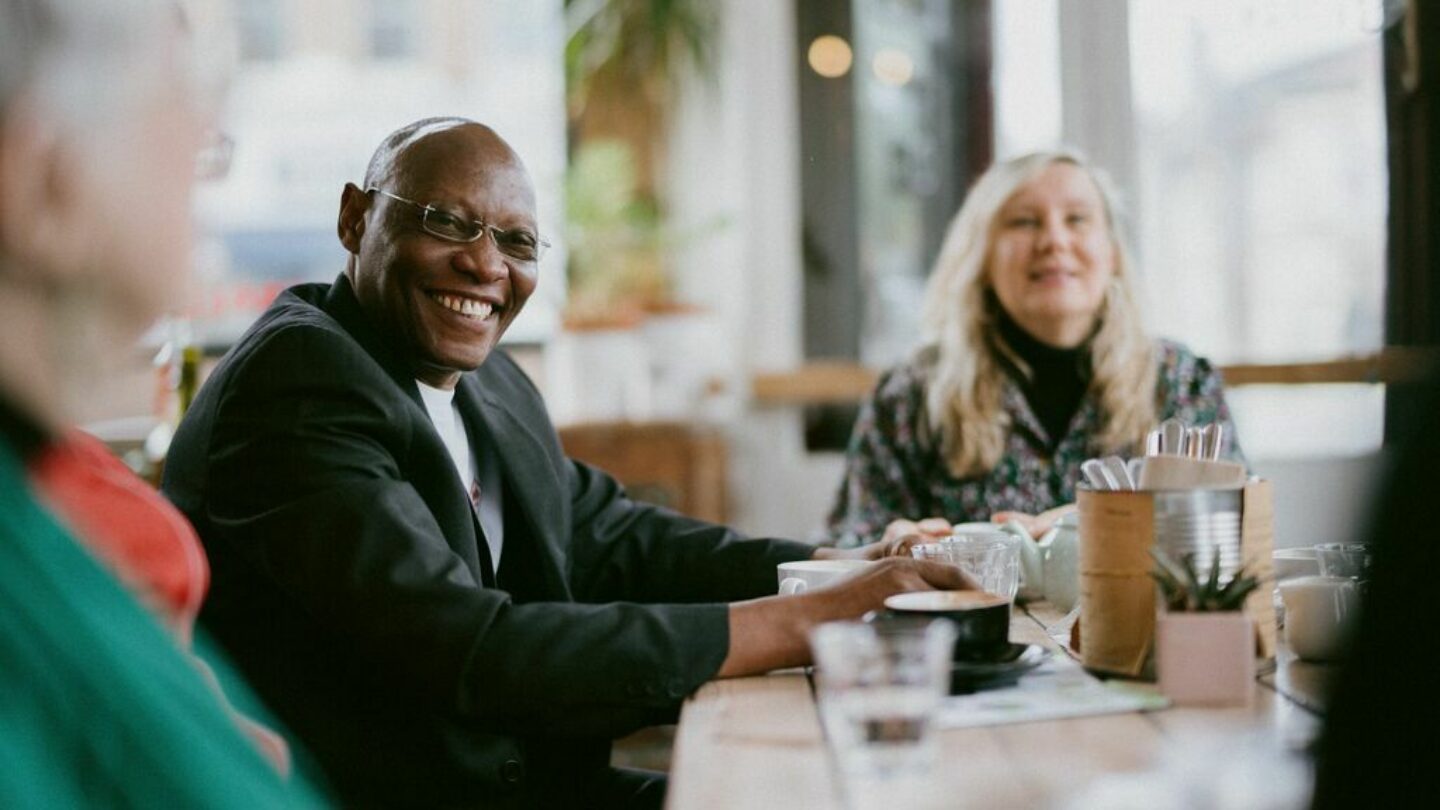Hello, and welcome to Kick Start.
I’m Alice from Christians Against Poverty, and in this session we’re going to talk about dealing with anxiety and worry.
In this session, we’re going to start the conversation about worry and anxiety.
Worry is a natural human reaction that we all face in response to a problem.
However, we don’t have to become a slave to worry.
It doesn’t have to control us.
It may feel easier to ignore our emotions, but in order for us to gain control of our worry, it’s important that we identify our anxious thoughts and deal with them.
Let me introduce you to Rob.
[Narrator] Rob has been up all night worrying about his interview the next day.
He’s quite capable of the job, but he’s been worrying that he won’t know the answers to the questions.
The weather forecast didn’t look very good, and he’s worried about getting wet on his way to the interview.
He leaves the house in a rush and starts to run through potential questions in his mind as he walks.
(whooshing)
After about ten minutes, he notices some dark rain clouds that look like they’re coming his way.
Unfortunately, Rob forgot (storm breaking) his umbrella and raincoat.
He starts to worry that he’ll get really wet and turn up at his interview with his clothes clinging to him.
(car splashing)
For the rest of the walk, all he can think about are the clouds.
He keeps nervously looking towards the sky, and thoughts about the potential rain consume his mind.
He worries that he’ll create a bad first impression, that he’ll have to sit through the interview soaking wet, and that he won’t get the job.
He can no longer think about his interview preparation that he was revising in his mind.
He arrives at his interview feeling anxious, stressed, and unprepared.
(door opening)
Now he feels a lot less able to perform at his best.
Many things that we worry about do have a root in reality.
For Rob, there was a chance that it would rain, so it was natural for him to worry about it.
But there are some things that he could have done to prevent the worst case scenario of him sitting down in an interview soaking wet.
These are what we call warning light worries.
Your emotions are like a warning light on the dashboard of a car.
They alert you to potentially serious problems underneath the bonnet.
In a car, you wouldn’t ignore the alert.
You would find and deal with the problem straight away.
In the same way, our emotions tell us to take action to prevent a problem, and can help us take steps to change a situation for the better.
If Rob had listened to his worries, he could have taken an umbrella with him.
This would have prevented him from that anxious walk.
The problem is, we can all spend a lot of time and energy worrying about the things that we can’t change, or that are very unlikely to happen.
Take a look at this graph.
The biggest things we worry about are either very unlikely to happen, or we can’t change or do anything about, because they’ve already happened.
They’re in the past, it’s gone.
We know that often life presents us with scary possibilities.
And for lots of us, our worries present a real element of danger and cause for concern.
However, worry and anxiety becomes damaging when feelings of unease start to take over our thinking and affect our behaviour.
Research shows that people who struggle with anxiety and worry are likely to also struggle with addictive behaviours.
Once we’ve taken the steps we can to limit the bad outcome we’re worrying about, we need to learn to let go of the things that we cannot change.
It’s not always easy, but we do have a choice.
We can choose to worry, or we can choose to let go.
(mellow music)
(chalk sketching)
We all feel worried about things from time to time. Some worries are easier to deal with – we just deal with the problem and the worry goes away. But sometimes we just can’t shake the feeling. That fear and dread seems to stick in our minds no matter what we do, and it starts to impact our everyday lives. Feeling worried or anxious is a natural human reaction. It’s our mind’s way of protecting us from something that could be harmful. However, when we allow these feelings to take over our lives and control us, they can feed our bad habits and cause us to miss out on things that could enhance our lives.
This session focuses on worry and anxiety, and the impact these emotions can have on our everyday lives. Worry is something we’ve all experienced, especially during this cost of living crisis, and it’s not something we should just ‘shrug off’. During this session, think about what’s worrying you at the moment, and look at different types of worries, including those which genuinely alert us to the possibility of danger, and those which we have no control over.
This session is designed to give you a better understanding of what causes us to worry, to help you identify anxious thoughts when they crop up, and to offer simple, practical tools to reduce the impact of worry in your lives. You should also end the session recognising that there are different types of worry.
Yes! We offer additional facilitator resources, such as guidance on activities and discussions, to allow you to run this as a group session for your church or community. Fill out the form and you’ll receive an email confirmation with instructions on how to access your free resources.

